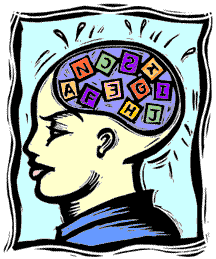 Occasionally, we do bedtime stories on the computer. There are nice e-books online through the International Digital Children’s Library (in fact, it’s the only place I’ve found بكار books), and—now and again—I let the boys look through the books on the عالم سمسم website. And, when the seven-year-old was first learning to read, I found Starfall.Com a useful English-language resource.
Occasionally, we do bedtime stories on the computer. There are nice e-books online through the International Digital Children’s Library (in fact, it’s the only place I’ve found بكار books), and—now and again—I let the boys look through the books on the عالم سمسم website. And, when the seven-year-old was first learning to read, I found Starfall.Com a useful English-language resource.
I never feel really great about it. It’s not really the same as sitting down around a paper book—and definitely not at all like having the whole family gathered around a book. But, now that e-books are a clear reality (and coming soon in Arabic), I’ve started to wonder: What’s the impact of e-books on children’s developing brains?
The American Academy of Pediatrics recommends no “screen time” for children under two, and limited “screen time” (that goes both for computers and TVs) for children 2+. Do e-books constitute screen time?
Is there any reason at all to stick with paper books?
I wasn’t able to find any studies about literacy with paper vs. literacy with e-books. Certainly, for the youngest readers, there’s something wonderful about paper or cardboard books. (You can’t shove an e-book into your mouth!)
And on the website Teleread, author Joanna argues that—while e-books are a fabulous tool for older students—“anyone who thinks they will replace paper for little kids has obviously not spent much time in a primary school!”
She argues that children need to turn pages, point to letters. They need to touch things; they need to feel the book-object in their hands. I agree with all this, but I wonder how much of it is my inborn resistance to change and how much is a reasonable assessment of how e-books will and won’t help my children learn.


Interesting – I agree with you that children need to have book – not just ebooks. Learning is a sensory experience and to engage a child’s brain or anyone for that matter the more sense used the more memorable. I don’t think anything can replace the experience of holding a child (or being held as a child) while reading to or with them. Computers or ebooks may at a later stage introduce another ‘senses’ or experiences to reading but in the early stages for me anyway it must be physical books.
Yes, I love the tactile-ness of the whole family experience. We’ve started going *really* retro and having family read-aloud time, a la the Jane Austen era. I don’t know how long it will last, but I find it a wonderful shared experience (the two-year-old, of course, is a little ambivalent…he still needs a picture in front of him to engage).
I have a love-hate relationship with eBooks. I myself prefer to hold a physical book and flip through pages…and that is a necessary skill for young children to learn, and only one reason why paper books won’t be disappearing from primary classrooms any time soon. But if I were teaching in a classroom with a SMART Board say, I’d have a huge collection of eBooks! But they could never replace my classroom library of physical books.
There are quite a few scholarly articles and studies about the use eBooks in English Language Arts/Reading classrooms, but it does seem most are geared towards at least 5 to 6 year-olds. Of course, eBooks come in a variety of formats and there’s a big difference in their efficacy depending on the interactivity of the books (whether there is a text-to-speech function, etc.) and what you want to achieve. For reluctant readers, for example, technology is a big motivator. There are also many studies about their use being beneficial with both gifted and talented students and those with special needs.
But curling up with a laptop is nothing like curling up with a good book, is it?!
Really, Bernie, I do fear my own Luddite-ism, although I’m sure the boys will find ways to subvert it. For instance, Isaac loves to do…power points. I kid you not. And I suppose it’s a decent way of composing a narrative, even if it’s not what I would choose for him. 🙂
And Rami loves to drag an old keyboard around and tap on it, saying that he’s doing his work.
But maybe my Luddite-ism isn’t *all* bad, since I do want them to interact with the tangible world, too.
Of course they will!! That’s what they’re supposed to do, right?
Power Points are popular in American classrooms…apparently a big part of our “new literacies”. Even my grad students have to create presentations now instead of more traditional papers.